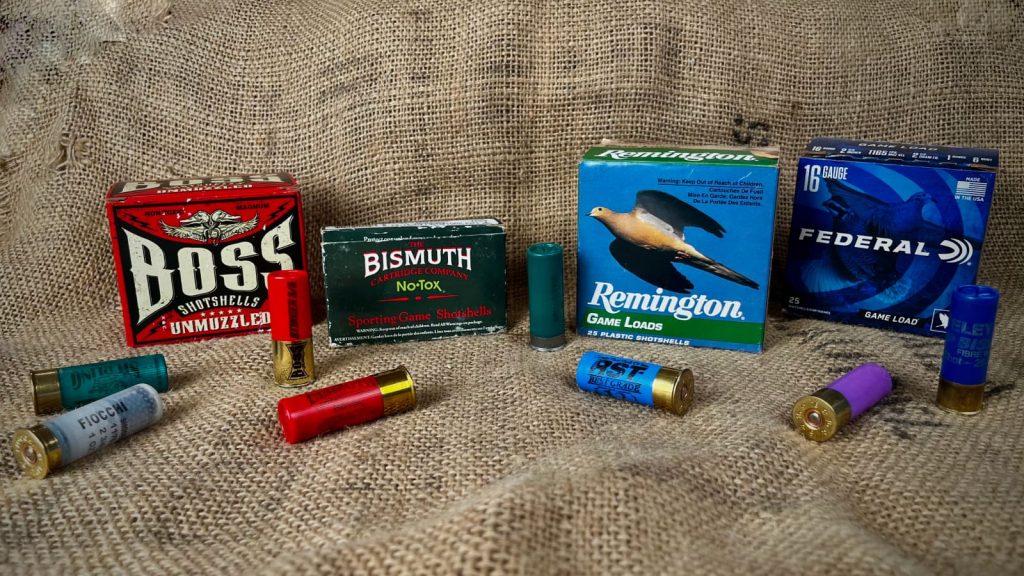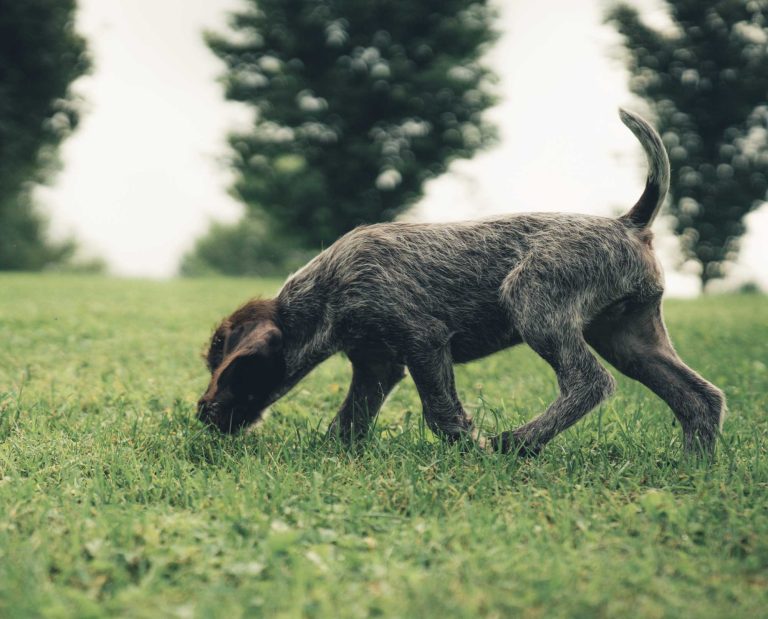A Guide to Choosing the Right Load For a Classic Shotgun

Old shotguns can be picky, but here is a guide to choosing the right shotgun ammo, from non-toxic to low-pressure shotgun loads.
Any time I see 1oz #5 12-gauge loads on a store shelf, I have heart palpitations. First, it’s a perfect pheasant load, works great on rabbits and squirrels, and can bring down a barnyard pigeon or two as well. What’s even better is that it’s light enough to shoot in three of my favorite vintage shotguns. The worst thing part is that it’s never around. When I see it, I buy a lot of it. If someone near me is shooting some, I’ll trade just about anything for it.
Vintage shotguns can be particular with the kinds of shotgun shells you put through them. In a world filled with high-velocity, heavy payload shells, the difficulty of finding lighter loads can take away some of the allure of owning a classic. But it shouldn’t stop you. There’s something warm and cozy about hunting with a 50-, 75-, or even 100-year-old shotgun.
Only a handful of ammunition manufacturers really make loads like they used to. With the right load, classic guns can work just as well, if not better, than some modern guns today. Whether you’re considering buying one or you’ve inherited an old shotgun from a family member, it’s important to shoot the right shells through it so it will keep working for the next generation.
Do a Quick Condition Check
Before loading up a vintage gun and busting some clays, you’ve got to know what you’re looking at. Take a look down the bore for any glaring pits. Make sure the action locks up tightly and the safety is in working order. Do you know the last time it was shot? Has it ever been refinished? These are good questions to ask, and if you can’t answer them, you should find somebody who can.
Have a gunsmith look your classic shotgun over. An experienced gunsmith can determine chamber length (some can be as short as 2 inches), proof on imported guns, barrel wall thickness, what kind of steel the gun is made of, and whether it is safe to fire. Depending on these factors, you’ll get a better idea of what kind of load to use in your gun.
The biggest difference you’ll run into are Damascus and fluid steel barrels. Damascus barrels are made by hammering different kinds of steel together over a mandrel—making a beautiful, almost psychedelic spiral pattern. Damascus was common on guns in the late 19th and very early 20th centuries. Most shooters are hesitant to shoot them because they’re afraid of invisible corrosion that could cause the barrels to blow up. Some shoot them anyway, or only shoot them with black powder loads and accept the risk. Personally, I stay away from them because I still have all ten of my fingers, and I’d like to keep them. If you’re dead set on shooting a shotgun with a Damascus barrel, don’t until a licensed gunsmith looks it over. Also, consider your fingers.
Fluid steel barrels are generally safe on guns in good condition. They’re made the same way modern shotgun barrels are made, by drawing hot steel over a mandrel. You need to know the chamber length to figure out what size shells to use. It also isn’t a bad idea to have the wall thickness of your gun checked, too, especially if it’s in unbelievably good condition (this means it was probably refinished, and the barrel walls could be thinner than normal). Finally, you should note when your gun was built if you plan on shooting steel shot through it. Vintage barrel steel was softer. If you’re going to shoot non-toxic, bismuth is safe to use older guns.

Low Slow is the Tempo
You wouldn’t fill a vintage Aston Martin with 87-octane Regular, and you shouldn’t run your vintage shotgun on just any load. Shotgun loads made today are very different than the loads produced when your classic gun was built. For example, we’ll talk strictly about 12 gauge here because that’s what most of you are shooting.
It isn’t uncommon to find a 12-gauge pheasant load today with 1-1/4 oz of shot running at 1500 fps. This is far heavier and faster than loads of yesteryear. But does that mean it’s better? Not necessarily. The phenomenon of cartridges firing heavier payloads is mostly the result of shooters missing birds. We tend to try to buy our way out of a problem instead of looking at the root cause; maybe we’re not as good at shooting as we thought. I’ve seen a skilled competition shooter break 30, 40, and 60-yard clays with an improved choke and 1oz loads.
If you do your part, a 1oz 12-gauge load traveling at 1200fps or less should have you covered out to 40 yards—which is way farther than most people shoot birds. Your gun will be happier with a lighter load, too. Modern shells produce lots of pressure, and modern guns are OK with that. But higher pressures in vintage guns can cause damage. You won’t notice it right away, but sooner or later, your gun could come off face, and the barrels won’t lock up well with the action. Older guns also tend to be built to slighter dimensions, and this is especially true with English guns. Regarding recoil, they are much more pleasurable to shoot with lighter loads.
This past season, I hunted ruffed grouse and woodcock in Maine with a side-by-side built in 1939. I loaded the gun with 2½-inch, ¾-ounce RST Best Quality loads with #8 shot and was able to drop just about anything I shot at, even when shooting through brush. I’m not a great shot, but the combination worked fine for me, and the recoil was about as stiff as a 28-gauge.
If you’re shooting a 12-gauge made before the 1970s, go with a 1oz load or less and adjust the shot size accordingly depending on the birds you’re after. For sub-gauges, go on the lighter side of what everybody else is shooting.

More on Non-Toxic Loads for Vintage Guns
Many vintage guns were not designed to shoot steel. Some experiments have been done with old guns and steel shot with mixed results. A good rule of thumb is not to do it because you don’t know what kind of steel your barrel is made of. The main thing you’re avoiding by not shooting steel is damage to the barrels. Hevi Shot is also hard on old guns. If you absolutely have to shoot steel, don’t shoot through a choke any tighter than Modified.
Vintage shotgunners who want to shoot non-toxic should also consider wads. This is where barrel thickness comes into play. Some manufacturers are offering fiber wads, which mimic the shells made years ago. But in barrels that have been polished to remove pitting, fiber wads can leave room for lead shot to fuse together by gasses escaping around the wad. A biodegradable plastic is a better non-toxic choice in guns that have slightly wider bores. Figure out your bore dimensions and purchase wads accordingly.
Regarding shot, bismuth is the best non-toxic option. You can fire them out of virtually any choke just as you would lead, and the shot sizes are pretty much the same, too. The trick is finding bismuth loads that are light enough to fire in a vintage gun. I’ve had good luck with Boss, Kent, and Eley. When I’m hunting ducks, I shoot a 100-year-old Parker and use 1oz ⅗-shot bismuth blend from Boss. The ducks don’t like it.
Why You Might Want to Roll Your Own
Lighter shotgun loads aren’t as easy to come by as they once were. When you see loads you know will work in your gun, buy as much as you can. If you find yourself burning through flats of shells, then you might want to look into reloading.
Reloading generally doesn’t make sense for most shooters, as factory loads have become so cheap. But for those looking for something specific, a cheap Lee reloading press will serve you well. There is a mountain of data online for low-pressure shotgun loads, but it’s best to stick with established load data published by major companies.








